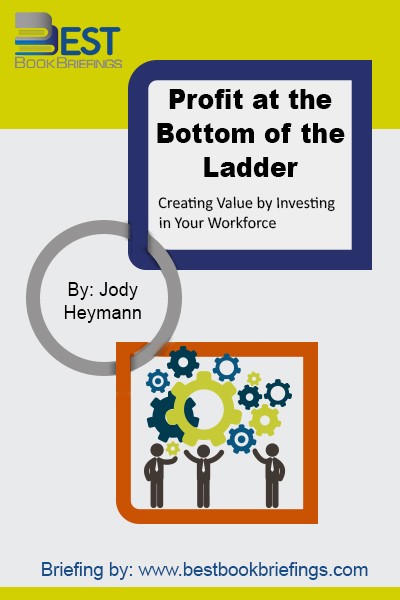Profit at the Bottom of the Ladder
Creating Value by Investing in Your Workforce
Number of pages: 288
Publisher: Harvard Business Review Press
BBB Library: Human Resources
ISBN: 9781422123119
Editorial Review
Most managers assume that surviving, especially in recessions, requires slashing wages, benefits, and other workforce expenses. And lowest-skilled workers are often viewed as the most expendable.In Profit at the Bottom of the Ladder, Jody Heymann overturns these assumptions. Drawing from thousands of interviews with employees from front line to C-suite at companies around the world, Heymann shows how enterprises have profited more by improving working conditions.
Book Reviews
Books on Related Topics

If your competitive advantage depends on your people creating something valuable and distinctive, then your workforce can't be normal. To get your extraordinary results, you are going to have to build yourself a workforce that is extraordinary in a way that customers care about. To build a great organization, you need

Recognizing talent is a leader’s most needed task. Today, more than ever, an organization’s fate depends on its ability to identify, coach, retain and, when needed, replace talent. The simple answer to what is talent: is achievement. Talent without achievement is reduced to only potential. Let’s start by discussing the seven

In this book we get to know that human assets aren’t a part of a business. If you take away the human assets, you don’t have a business, just a bunch of offices and equipment that can’t do anything. Businesses are people–irrational, emotional, unpredictable, creative, oddly gifted, and sometimes ingenious people

Those of us who sit in an office often feel a lack of connection to the material world, a sense of loss, and find it difficult to say exactly what we do all day. Here, we seek to restore the honor of the manual trades as a life worth choosing. It




